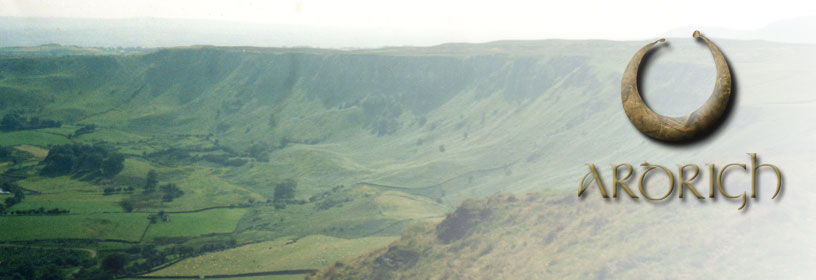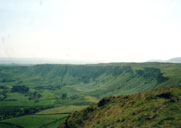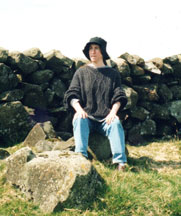What's All This Then?
thoughts and follies
Various musings and points of note...
Ardrigh Books

news and views
Musings
Early in the 1990s, a friend suggested that we walk a part of the Ulster Way along the path above the escarpment of Sallagh Brae. This lies inland, a few miles north of Larne, at the southern end of the Glens of Antrim. On a sunny spring day we began our hike from a standing stone on the old inland road from Larne to upper Glenarm. After picking our way across patches of treacherous bog we eventually found ourselves on a high open ridge. It curved around the cultivated fields below creating a vast natural amphitheatre. The land lying beneath the rock face dropped gently towards Ballygally Bay. The Scottish mainland was only just visible as a line of grey blue along the horizon. At the far end of this great circle of cliff, the promontory fort of Knockdhu commanded the view to the northeast.
For both of us this particular walk across an ancient landscape proved to be an epiphany. The northern Antrim uplands became present to us in a new way. It was as if an invisible veil had lifted and the countryside we were living in was revealing glimpses of other times and people who had shared it in the past. In our excitement, we wanted to learn everything we could about the archaeology and history of this new found place.
After a little research we found out that the area around Sallagh Brae was richly scattered with prehistoric and Iron age remains, prompting the archaeologist Richard Hodges to describe the area as ‘one of the most imposing Iron Age settlements in Ireland’. However, outside of an article published by Oliver Davis in 1937-8 and the previously mentioned Hodges article of 1975, we could find nothing else. Time and time again, as with many other places we would visit in succeeding years, sources of further information proved to be elusive, frequently non-existent. We began years of foraging in libraries and local history archives. We also noticed that in their quest to penetrate international markets local publishers were bringing out fewer and fewer local interest titles.
We decided that rather than wait for an unlikely sea change in local publishing, if we wanted to see local material available we would have to take the responsibility for bringing it out ourselves. Luckily, we are now at a time when technology has facilitated small independent ventures like ours. So, we are able to fulfil this quixotic desire to share our discoveries of Ireland’s ancient landscapes and the people of its past who, with their confused motives and diverse backgrounds, have created the culture. We want to rescue the obscured work of significant (and occasionally ‘insignificant’) local writers. We will publish their work for those who may want to make informed choices about what constitutes their cultural inheritance. We hope that our books will attract those who are excited by our shared local culture, love reading, have a forgiving heart and are finding the post- agreement shopping culture of the Province as much of an exclusion zone as we are. We may even hope that the richness of what is newly revealed may act as a kindling to fire up a new cultural revival.
images

